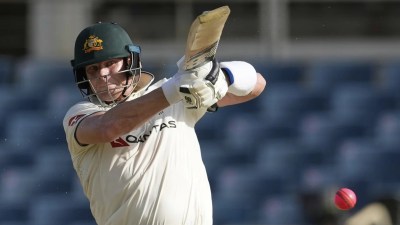Waltzing Around: Why we need to take dance education more seriously
Dance has enormous potential that enables students to develop many fundamental life skills, such as problem-solving, creativity, critical and expressive communication skills. It also has physical benefits.
 Dance can play a positive role in promoting fitness and healthy lifestyles. (Photo: Thinkstock)
Dance can play a positive role in promoting fitness and healthy lifestyles. (Photo: Thinkstock)
India is known for its rich cultural traditions and values; apart from that, we are also known for accepting other cultures with open arms. Dance, music and singing have been an integral part of our lives, be it a festival, marriage, birth or even death, dance and music play an important part.
But, in spite of its significance and historical relevance in India, a majority of people still look at dance as just a hobby. There are only a handful of people who value the art form not just as a means to entertain, but, more importantly, to as a form of education.
If we look at the history of Indian classical or folk dances, there are temple dances, martial dances, seasonal dances, ritual dances and many more. Similarly, each country boasts of several classical and folk dances as well — from Summer and Winter dances, to courtship and wedding dances.
Dance teaches us more than just movement — it is more than a way to stay fit; it is not about doing the steps correctly; rather, it’s about enriching our lives with history and culture. But these days, I see many schools being influenced by Bollywood, though I myself work in the film industry, I truly believe that Bollywood is not the way to educate.
I was once at a well-known international school giving a talk about dance and its changing mind sets. I opened my talk by asking the students to name five best dancers from India and abroad. Their answers surprised me. The kids excitedly named Hrithik Roshan, Kartina Kaif, Deepika Padukone, Shahid Kapoor, and many yelled and cheered for Ranveer Singh.
It was sad to see that none knew of Pandit Birju Maharaj, Dr Sonal Mansingh, Mallika Sarabhai or even Shiamak Davar or Terence Lewis. Expecting them to talk about Fred Astaire, Ginger Rogers or even Carmen Miranda was unthinkable at the time. This is because we — at school — encourage Bollywood and its music and dance. For our annual shows, we do present various folk dances but the music we choose is Bollywood-based or dances are Bollywood-ised. We have theatre as part of the annual day celebrations, but the acting is Bollywood-inspired.
If we don’t inculcate the right teachings at the school level, where will our children go?
Please note, I am not discouraging you all from Bollywood. This is only to encourage you to motivate your kids to learn a purer form of dance. And, like I mentioned, there is more to dance than just dance itself.
I believe dance has enormous potential that enables students to develop many fundamental life skills, such as problem-solving, creativity, critical and expressive communication skills. It also has physical benefits such as supporting the development of a child’s body balance, improving coordination, motor skills, etc., and can play a positive role in promoting fitness and healthy lifestyles.
In addition, it also allows students to collaborate and imaginatively develop, it challenges both their own knowledge and understanding, and that of others, by listening to, and talking about, their different ideas. Because dance provides all these benefits, it can also go a long way in helping to promote social inclusion. As today’s society becomes increasingly multicultural, classrooms across India often include more than one student for whom English/Hindi is not their first language and to whom English/Hindi culture itself seems alien. I believe it is, therefore, essential that we find ways to bridge these gaps and communicate with these students beyond the written and spoken word if they are to be enabled to connect with, and benefit from, the learning experience. In such a scenario, I see dance as a key area in which this can be achieved.
It is said, if you are visiting a country, learn about its dance and music and you will know what kind of people you will encounter. Keeping this in mind, I feel all schools should encourage and teach all subjects through dance, be it history, poetry, or even math — dance can be used to sow the seed into a child’s life who, in the years to come, can develop his liking for the subject he wishes to choose.
In the US, dance education programme was founded by legendary dance educator Martha hill in 1932; and since then, dance has become a major part of learning for children. There are schools that teach world dances, a way to learn about the world cultures and at the same time develop a multifaceted personality, and personal as well as interpersonal skills.
Here in India, the case for raising dance education’s status in the national curriculum looks very weak right now. That is because the education boards still can’t look beyond certain dance forms. We travel the world to experience life, we eat different cusines, we study about various cultures but when it comes to dance we are still like a horse with his blinkers on.
Through this article I would like to request all educationists and dance lovers to please look at dance in a more serious manner. We should look beyond the physical appearance of dance as an art, and truly try and understand its advantages and its life-lasting benefits and knowledge. Give it a chance, and you will be surprised to see the unmatched positive impact that education through dance and physical dance study can bring to a child, and thus, society as a whole.


- 01
- 02
- 03
- 04
- 05

























